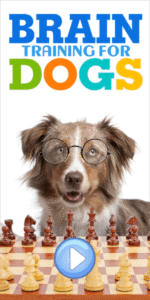Training your dog is a rewarding journey that can enhance your bond, improve communication, and ensure a happy and well-behaved furry companion. Whether you’re a new dog owner or looking to refine your dog’s skills, understanding the principles of obedience training can make the process smoother and more enjoyable for both you and your pet.
Why Obedience Training Matters
Dog obedience training is more than just teaching your pet to follow commands—it’s about building a respectful relationship where your dog understands and responds to your expectations. Obedience training can:
commands—it’s about building a respectful relationship where your dog understands and responds to your expectations. Obedience training can:
- Promote Safety: Teaching commands like “come,” “stay,” and “leave it” can prevent dangerous situations and keep your dog safe in various environments.
- Reduce Behavioral Problems: Consistent training helps curb unwanted behaviors such as excessive barking, jumping, and chewing.
- Enhance Socialization: Obedient dogs are generally better at interacting with other animals and people, leading to a more sociable and confident pet.
- Strengthen Bonding: Training sessions provide quality time and can deepen the bond between you and your dog.
Getting Started: The Basics
- Know Your Dog’s Motivation: Dogs are motivated by different things. Some respond well to treats, while others might be more motivated by toys or praise. Identify what drives your dog and use it to your advantage during training.
- Keep Training Sessions Short: Dogs, especially puppies, have limited attention spans. Short, frequent sessions (5-10 minutes) are often more effective than long, infrequent ones.
- Be Consistent: Use the same commands and gestures consistently. Mixed signals can confuse your dog and hinder their learning.
- Use Positive Reinforcement: Reward your dog with treats, praise, or playtime when they perform the desired behavior. Positive reinforcement is a powerful motivator and encourages your dog to repeat the behavior.
Essential Commands
 Sit: This is often the first command taught and forms the basis for other training. To teach “sit,” hold a treat close to your dog’s nose, move it upwards, and as their head follows the treat, their bottom will lower into a sitting position. Reward and praise immediately.
Sit: This is often the first command taught and forms the basis for other training. To teach “sit,” hold a treat close to your dog’s nose, move it upwards, and as their head follows the treat, their bottom will lower into a sitting position. Reward and praise immediately.- Stay: Start by asking your dog to sit. Then, take a step back and say “stay.” Gradually increase the distance and duration before rewarding them. This command is crucial for preventing your dog from running off.
- Come: This command can be a lifesaver in emergencies. Use a leash initially to guide your dog towards you while saying “come.” Reward them when they reach you. Practice this in various environments to reinforce the behavior.
- Leave It: This command is useful for preventing your dog from picking up or chewing on something harmful. Hold a treat in your hand and close your fist. When your dog stops trying to get the treat and looks away, reward them. Gradually increase the challenge by placing the treat on the floor.
- Down: Teaching “down” can help your dog learn to settle and stay calm. Start with your dog in a sitting position. Hold a treat in front of their nose and lower it to the ground. As your dog follows the treat, their body should lower into a lying position. Reward them immediately.
Troubleshooting Common Issues
- Lack of Interest: If your dog isn’t responding to training, reassess their
 motivation. Try different rewards or training environments.
motivation. Try different rewards or training environments. - Short Attention Span: Keep sessions brief and engaging. End on a positive note to keep your dog looking forward to the next session.
- Inconsistent Commands: Ensure all family members use the same commands and training techniques to avoid confusing your dog.
Advanced Training and Beyond
Once your dog has mastered basic commands, you can introduce more advanced training, such as agility courses, scent detection, or complex tricks. These activities not only keep your dog mentally stimulated but also provide additional bonding opportunities.
The Joy of Training
 Dog obedience training is a journey filled with patience, perseverance, and lots of rewards. The skills your dog acquires not only make them a better companion but also contribute to their overall well-being. Celebrate small victories and enjoy the process of learning and growing together.
Dog obedience training is a journey filled with patience, perseverance, and lots of rewards. The skills your dog acquires not only make them a better companion but also contribute to their overall well-being. Celebrate small victories and enjoy the process of learning and growing together.
Remember, every dog is unique, and training methods should be adapted to fit your dog’s personality and learning style. Embrace the adventure and cherish the moments of connection and growth that come with training your canine companion.
Robert
support@iqquest.info


